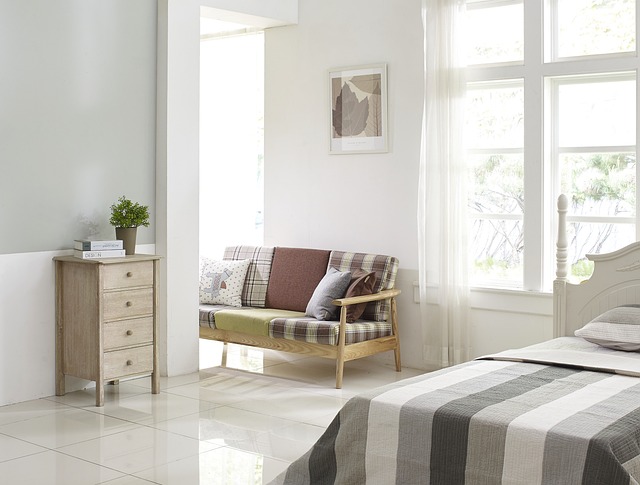Students transitioning into shared student housing must balance their social lives with protecting their privacy. Comfortable living spaces allow for dedicated areas to study, relax, and sleep undisturbed, contributing to overall well-being and academic success. Strategies include establishing clear boundaries with roommates, using noise-canceling devices, learning to communicate open about comfort levels, and adopting efficient study routines that integrate both social activities and private moments. Safeguarding online privacy involves understanding social media settings, limiting personal details, selecting content access, and openly discussing comfort levels in shared living spaces.
“In today’s digitally connected world, balancing privacy and social life is a delicate act for students. This comprehensive guide aims to empower you with the knowledge and tools to navigate your academic journey while safeguarding your personal space. From understanding your privacy rights on campus to creating boundaries in shared living spaces, we explore effective strategies. Learn how social interactions impact your privacy and discover tips for maintaining harmony. Get ready to embrace college life with a balanced approach, ensuring both comfort and security in your student housing experience.”
- Understanding Your Privacy Rights on Campus
- Creating Boundaries: A Guide to Comfortable Living Spaces
- Navigating Social Life and Its Impact on Privacy
- Tips for Maintaining a Healthy Balance
- Privacy in Student Housing: What to Expect and How to Prepare
- Digital Wellbeing: Protecting Your Online Privacy
Understanding Your Privacy Rights on Campus

Understanding Your Privacy Rights on Campus is a crucial aspect of navigating college life. As a student, you have a right to privacy in your living spaces, whether it’s a dorm room or shared apartment. This means that your personal belongings and conversations within your immediate space should be respected and protected. Balancing privacy and social life can seem challenging at first, but establishing clear boundaries is key. Communicate openly with your roommates or suitemates about what makes you comfortable and ensure everyone respects each other’s need for privacy.
Student housing often provides a mix of communal areas and private spaces, allowing students to engage in social activities while still maintaining some level of privacy. Making use of these spaces wisely can help foster a healthy balance. For instance, choose study spots that offer solitude if you need to focus, or join group study sessions with friends when socializing is more your style. Student living tips include learning to tune out disturbances from shared walls and developing the confidence to politely decline invitations when you require a quiet evening.
Creating Boundaries: A Guide to Comfortable Living Spaces

Creating Boundaries: A Guide to Comfortable Living Spaces
In college, balancing privacy and student social life is an art that every resident learns to master. When sharing living spaces with peers, understanding personal boundaries becomes essential for a comfortable college experience. Students should aim to create private sanctuaries within their dorm rooms or shared apartments, ensuring they have dedicated areas for studying, relaxing, and sleeping free from interruptions. This might involve utilizing room dividers, hanging curtains, or simply arranging furniture in a way that respects individual space.
Privacy doesn’t mean isolation; it’s about fostering an environment where students can retreat to recharge and refocus before rejoining the social buzz of college life. Balancing privacy student housing is a skill that contributes to overall well-being and academic success. By establishing these boundaries, residents can make their living spaces more hospitable, allowing for peaceful moments amidst the hustle and bustle of campus life and social interactions.
Navigating Social Life and Its Impact on Privacy

In the dynamic environment of college or university, students often find themselves navigating a delicate balance between their privacy and social lives. Balancing privacy in college is crucial, especially when transitioning from home to student housing, where comfortable living spaces might come with shared common areas and new social expectations. Student social life thrives on interaction, but it can inadvertently impact personal space and privacy, requiring careful consideration.
To maintain a healthy equilibrium, students should explore various strategies like establishing clear boundaries with roommates or suitemates, utilizing noise-canceling devices for study time, and learning to communicate openly about comfort levels regarding shared spaces. Embracing these student living tips can foster a comfortable environment that respects both individual privacy and the vibrancy of college social life.
Tips for Maintaining a Healthy Balance

In the bustling college environment, finding a balance between social life and privacy is crucial for students’ overall well-being and academic success. Balancing privacy college requires intentional efforts to create comfortable living spaces, especially in shared student housing, where personal time is as valuable as engaging with peers. Students should consider establishing clear boundaries within their accommodations, using noise-cancelling devices, or setting specific times for social interactions to maintain a sense of privacy.
To achieve a healthy balance between social life and academic responsibilities, students can employ various living tips. These include prioritizing self-care, learning to say no to non-essential commitments, and effectively managing time. Creating a study routine that accommodates both personal space and social activities ensures students can engage fully in college life while maintaining their privacy, fostering a positive and productive environment for overall development.
Privacy in Student Housing: What to Expect and How to Prepare

Moving into student housing is an exciting step towards independence and a new chapter in your life. However, it’s essential to understand that living with roommates or in shared spaces means navigating the delicate balance between personal privacy and social interactions. Comfortable living spaces allow for this balance, providing areas where students can retreat to study, relax, or simply have some alone time—essential for mental well-being and academic success.
To prepare for this new environment, students should set clear boundaries from the outset. Open communication with roommates is key; discuss expectations regarding noise levels, common areas, and personal space. Establishing a routine can also help. Designate specific times for study or quiet moments, ensuring these are respected by all. Remember, finding the right balance between social life and privacy will contribute to a positive college experience, fostering a sense of comfort, security, and productivity in your new home away from home.
Digital Wellbeing: Protecting Your Online Privacy

In today’s digital age, students often face a delicate balance between their social lives and maintaining online privacy. With constant connectivity, sharing personal information has become second nature on social media platforms. However, it’s crucial for college students to understand that their comfort level in student housing may differ from home, where they have more control over their private spaces. Therefore, adopting digital wellbeing practices is essential for protecting one’s online privacy.
Students should familiarize themselves with the privacy settings on social media and regularly review what information is shared publicly. Limiting personal details on public profiles and being selective about who can access their content can help prevent unwanted attention or invasions of privacy. Additionally, students living in shared accommodations should establish open communication with roommates or suitemates regarding comfort levels for personal spaces and social interactions within their living environment.
